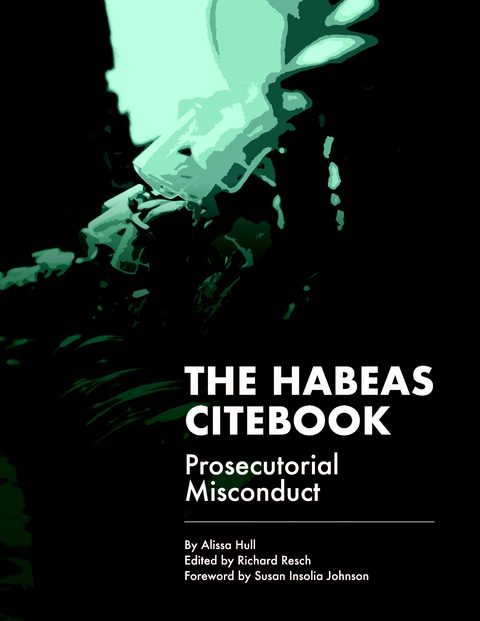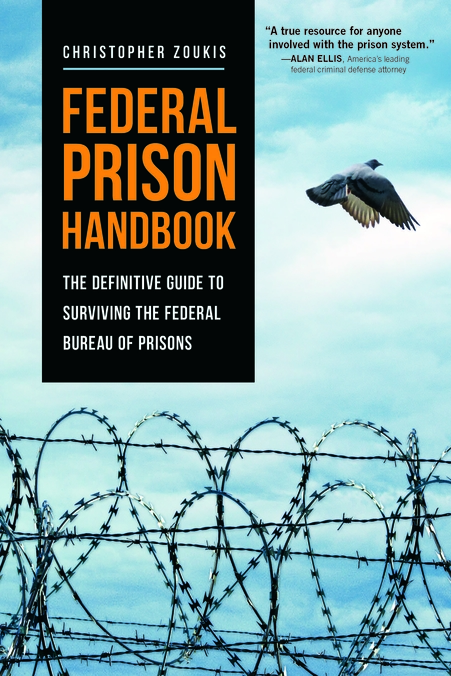Connecticut Supreme Court Announces Teague’s ‘Watershed’ Rule Exception to Nonretroactivity of New Constitutional Rule of Criminal Procedure on Collateral Review Has ‘Continued Vitality’ in Connecticut, Adoption of Third Exception to Teague’s Nonretroacti
by Douglas Ankney
The Supreme Court of Connecticut held that the principles set forth in State v. Dickson, 141 A.3d 810 (Conn. 2016), cert. denied, 582 U.S. 922 (2017), regarding eyewitness identification apply retroactively on collateral review. In doing so, the Court also ruled that the “watershed rule” exception to the rule of nonretroactivity of Teague v. Lane, 489 U.S. 288 (1989), “has continued vitality in Connecticut” and announced a third exception to Teague’s rule of nonretroactivity.
Background
In 1990, a jury convicted Edgar Tatum of murder, and he was sentenced to 60 years in prison. The prosecution’s case against Tatum, who is Black, was based largely on the testimony of two White eyewitnesses, i.e., cross-racial stranger eyewitnesses, to the shooting. Both eyewitnesses were heavy users of narcotics, and both had previously identified an individual other than Tatum as the shooter. But at Tatum’s probable cause hearing a year later, the eyewitnesses recanted their previous identifications and identified Tatum—who was the only Black man seated at the defense table—as the shooter.
On appeal to the Connecticut Supreme Court, Tatum challenged the trial court’s admission of the unduly suggestive in-court identification. The Supreme Court rejected Tatum’s argument and upheld the judgment of conviction (“Tatum 1”).
Then in 2012, the Connecticut Supreme Court overturned prior decisions that had prohibited expert testimony regarding eyewitness testimony. In State v. Guilbert, 49 A.3d 705 (Conn. 2012), the Supreme Court held for the first time that specific factors that are not within the general knowledge of the average person affect the reliability of eyewitness identification, so expert testimony on those factors is permissible. The Guilbert Court stressed that “eyewitness identifications are potentially unreliable in a variety of ways unknown to the average juror,” and this “recognition tracks a near perfect scientific consensus.” It stated: “The extensive and comprehensive scientific research, as reflected in hundreds of peer reviewed studies and meta-analyses, convincingly demonstrates the fallibility of eyewitness identification testimony and pinpoints an array of variables that are most likely to lead to a mistaken identification.” Additionally, conventional methods of alerting juries to the fallibility of eyewitness testimony—cross-examination, closing argument, and generalized jury instructions—are not enough, the Guilbert Court reasoned. Finally, it instructed that trial courts retain discretion to provide “focused and informative jury instructions on the fallibility of eyewitness identification evidence.”
Four years later, the Dickson Court set forth additional protections against inherently suggestive eyewitness identifications. In overruling prior case law to the contrary, it held that “in cases in which identity is an issue, in-court identifications that are not preceded by a successful identification in a nonsuggestive identification procedure implicate due process principles and, therefore, must be prescreened by the trial court.” In Dickson, the Supreme Court specifically overruled its rationale and holding in Tatum 1, regarding Tatum’s challenge to a “first-time, in-court cross-racial eyewitness identification.” The Dickson Court concluded that “any [first-time] in-court identification by a witness who would have been unable to reliably identify the [petitioner] in a nonsuggestive out-of-court procedure constitutes a procedural due process violation.”
Finally, in State v. Harris, 191 A.3d 119 (Conn. 2018), the Connecticut Supreme Court explained that the due process provisions of the state Constitution—article first, § 8—provide greater protection than the U.S. Constitution with respect to the admissibility of eyewitness identification testimony.
Procedural History
Tatum subsequently filed a petition for a writ of habeas corpus (his fifth petition). In Count 6 of the petition, Tatum alleged that admission of the eyewitnesses’ identification evidence in his criminal case violated his due process rights under the Fourteenth Amendment to the U.S. Constitution and Article 1, §§ 8 and 9 of the Connecticut Constitution. Tatum also argued that the trial court’s jury instructions were insufficient to educate jurors on the factors that adversely impact eyewitness identifications, including cross-racial identifications, and that the holdings of Guilbert and Dickson should be retroactively applied to his case. In Count 7 of the habeas petition, Tatum argued that “advances in the science of eyewitness identification since his conviction highlight the unreliability of the eyewitness identifications that occurred in his criminal trial and call into question the validity of his conviction.”
The habeas court combined Counts 6 and 7 and explained that Tatum “already had litigated the identification procedures in his direct appeal and that the doctrine of res judicata prohibited [Tatum] from being able to relitigate this issue….” The habeas court then concluded that neither Guilbert nor Dickson apply retroactively and dismissed the habeas petition as to Counts 6 and 7. Tatum timely appealed, and the Appellate Court affirmed the judgment of the habeas court. He timely appealed to the state Supreme Court.
Analysis
The Court stated that the sole issue on appeal was whether the principles announced in Guilbert and Dickson apply retroactively to Tatum’s case on collateral review.
The Court began its analysis by discussing Teague, in which the U.S. Supreme Court set forth the framework for determining whether a new constitutional rule applies retroactively on collateral review under the U.S. Constitution. See Teague (plurality opinion); see also Thiersaint v. Commissioner of Correction, 111 A.3d 829 (Conn. 2015) (adopting Teague’s framework). Teague provides that a court “must [first] ascertain the legal landscape as it” existed at the time the petitioner’s conviction became final and “ask whether the [U.S.] Constitution, as interpreted by the precedent then existing, compels the rule…. That is, the court must decide whether the rule is actually new.” Beard v. Banks, 542 U.S. 406 (2004). For purposes of Teague, a constitutional rule is “new” if the result was not mandated by precedent existing at the time the petitioner’s conviction became final. Thiersaint.
In the present case, both parties and the Court agreed that Guilbert and Dickson created new rules, so the question was whether they applied retroactively to Tatum’s case on collateral review.
The Court observed that with “two exceptions, a new rule will not be applied retroactively to cases on collateral review…. First, if the new rule is substantive, that is, if the rule places certain kinds of primary, private conduct beyond the power of the criminal lawmaking authority to proscribe … it must apply retroactively.” Casiano v. Commissioner of Correction, 115 A.3d 1031 (Conn. 2015).
Regarding the second exception, the Court noted: “if the new rule is procedural, it applies retroactively if it is a watershed [rule] of criminal procedure … implicit in the concept of ordered liberty … meaning that it implicat[es] the fundamental fairness and accuracy of [a] criminal proceeding….” Casiano. However, in the more than three decades since Teague was decided, the U.S. Supreme Court has never ruled that a new rule qualified as watershed. Id. In 2021, the U.S. Supreme Court abolished the watershed rule. See Edwards v. Vannoy, 593 U.S. 255 (2021). The Edwards Court reasoned that “continuing to articulate a theoretical exception that never actually applies in practice offers false hope to defendants, distorts the law, misleads judges, and wastes the resources of defense counsel, prosecutors, and courts.”
Watershed Rule’s Continued Vitality in Connecticut and Third Exception to Teague
Despite the watershed rule having been abolished on federal collateral review, Tatum argued that the procedural rules articulated in Guilbert and Dickson constitute watershed ones. The Court was receptive to his argument, stating that although federal decisions applying Teague are instructive, it is not bound by them and will conduct its own independent analysis and application of Teague. Thiersaint. It explained that Connecticut courts have applied the Teague framework “more liberally than the United States Supreme Court [might] otherwise apply it….” Casiano; see also Rhoades v. State, 233 P.3d 61 (Idaho 2010) (because comity concerns do not apply to state court’s review of state convictions, Idaho courts are “not required to blindly follow [the United States Supreme Court’s] view of … whether a new rule is a watershed rule”), cert. denied, 562 U.S. 1258 (2011); State v. Mares, 335 P.3d 487 (Wyo. 2014) (applying Teague more broadly than United States Supreme Court when “a particular state interest is better served by a broader retroactivity ruling”). Thus, because the Connecticut Supreme Court is not bound by the U.S. Supreme Court’s application of Teague, the Court concluded that “Casiano remains binding in Connecticut,” so the watershed rule “has continued vitality” in the state. See, e.g., Danforth v. State, 761 N.W.2d 493 (Minn. 2009); Mares.
The Court stated that it is taking this opportunity to “provide greater clarity regarding the independent review [the Connecticut Supreme Court] undertakes when determining whether a rule applies retroactively on collateral review.” In particular, the Court announced that “in light of Edwards and the admittedly narrow applicability of the watershed exception, we think it necessary to adopt a third exception to the Teague rule of nonretroactivity.” See Thiersaint (the U.S. Supreme Court … “held in Danforth v. Minnesota that the restrictions Teague imposes on the fully retroactive application of new procedural rules are not binding on the states”).
The Court explained its third exception to Teague as follows: “We conclude that a new constitutional rule of criminal procedure must be applied retroactively on collateral review if the rule was a result of developments in science that persuaded us to reevaluate fundamental principles underlying judicial procedures, the rule significantly improves the accuracy of a conviction, and the petitioner advocated for the rule in the direct proceedings or in an earlier habeas petition.” The Court reasoned: “Just because a petitioner was ahead of scientific advancements that now call into question the fundamental principles underlying judicial procedures and the accuracy of a criminal conviction does not mean that the petitioner should be precluded from the application of that new rule.”
The Court discussed the case of a Louisiana man named Corey Miller to illustrate the need for the newly adopted third exception to Teague’s rule of nonretroactivity. Miller was found guilty by a nonunanimous jury vote of 10 to 2, which was permitted by the Louisiana Constitution at the time. He was sentenced to life in prison without the possibility of parole. At both the trial and appellate levels, he argued that the nonunanimous jury verdict violated the U.S. Constitution. The trial court and intermediate state appellate court rejected his argument, and both the Louisiana Supreme Court and U.S. Supreme Court denied review. Seven years after his conviction became final, the U.S. Supreme Court ruled that the conviction of another Louisiana man in state court by a nonunanimous jury verdict violates the U.S. Constitution. Ramos v. Louisiana, 590 U.S. 83 (2020). Nevertheless, because of Teague’s rule of nonretroactivity, Miller was unable to benefit from Ramos despite advocating for the newly adopted rule at every opportunity. Thus, the Court explained that there is a need for its newly adopted third exception to Teague in order to avoid such miscarriages of justice.
Retroactivity of Dickson
After announcing the adoption of the third exception, the Court turned to the issue of whether Guilbert and Dickson apply retroactively on collateral review. Regarding Guilbert, the Court ruled that it does not apply retroactively because it “articulated an evidentiary rule, not constitutional one.” It explained that under either the watershed rule or the third exception, the new rule “must be of constitutional dimension” in order to apply retroactively. Guilbert ruled that trial courts have the discretion to admit expert witness testimony regarding the reliability of eyewitness identifications, but that is a new evidentiary rule, not constitutional one. Consequently, the Court held that Guilbert cannot be applied retroactively in Tatum’s case.
In contrast, the Court declared that there “is no question … that Dickson announced a constitutional rule of criminal procedure.” Dickson involved a first-time, in-court identification of the person who allegedly committed the crime by an eyewitness in what is likely the most suggestive identification method possible, the Court commented. It also noted that even under optimal conditions, “eyewitness identification is among the least reliable forms of evidence.” See, e.g., D. Medwed, Anatomy of a Wrongful Conviction: Theoretical Implications and Practical Solutions, 51 Vill. L. Rev. 337 (2006). Those conditions raise concerns about the accuracy of a conviction and the “fundamental fairness” of the trial is “seriously diminished,” resulting in procedural due process considerations, according to the Court. Teague. Thus, the Court held that Dickson must be applied retroactively in Tatum’s case on collateral review “to ensure the reliability of his criminal trial,” explaining: “the rule set forth in Dickson must apply retroactively on collateral review because the rule was a result of developments in science that persuaded us to reevaluate the fundamental principles underlying eyewitness identification evidence, the application of the rule significantly improves the accuracy of the [Tatum’s] conviction, and [Tatum] advocated for the rule in his direct appeal.”
Conclusion
The Court concluded that the Appellate Court, “which lacked the benefit of our newly expanded formulation of the Teague rule,” erred in upholding the habeas court’s dismissal of Count Six and Count Seven of Tatum’s operative habeas petition based on the nonretroactivity of Dickson to cases on collateral review.
Accordingly, the Court reversed the judgment of the Appellate Court and remanded the case to the Appellate Court with instructions to reverse the judgment of the habeas court with respect to the foregoing Counts and further instructed the Appellate Court to remand the case for a trial on those Counts, applying Dickson retroactively to the case. See: Tatum v. Commissioner of Correction, 322 A.3d 299 (Conn. 2024).
Editor’s note: Anyone interested in exceptions to Teague’s rule of nonretroactivity or eyewitness misidentification is strongly encouraged to read the Court’s full opinion.
As a digital subscriber to Criminal Legal News, you can access full text and downloads for this and other premium content.
Already a subscriber? Login





